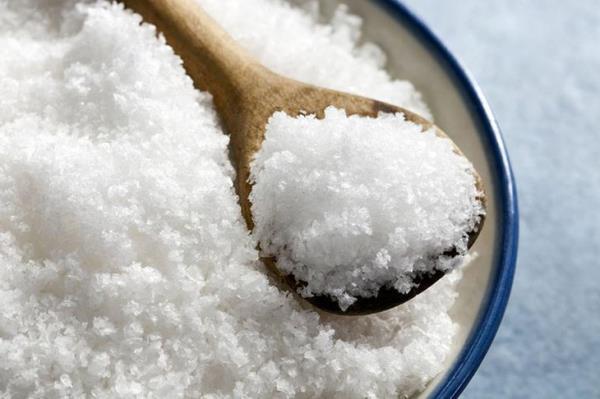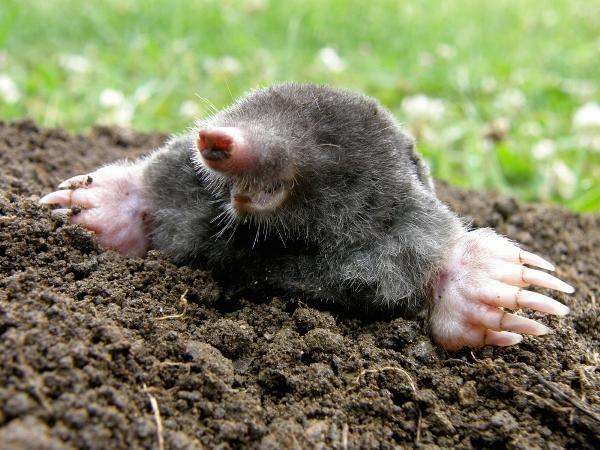If you use salt, you will be the king in the fall!
Surprisingly, even ordinary table salt can be used with great benefit in vegetable gardens and dachas for various purposes. It is environmentally friendly and economical.

The use of salt in dachas and vegetable gardens
Sodium chloride is used successfully
- to get rid of pests;
- to feed plants and improve the quality of fruits;
- to speed up the fruiting process.
It is important to remember: an overdose of table salt can do great harm! Excessive soil salinity leads to the death of all living things on it.
Getting rid of pests with table salt
How often do we use in our speech the expression "pour salt on the tail" without thinking about the true meaning of the phrase. Most often, we mean its figurative meaning. And, nevertheless, these words are true in their direct meaning.

Fighting moles
Mammals digging the ground do a lot of harm to the economy. Digging their passages and burrows, they not only spoil the landscape. By their actions, moles violate the structure of the soil, undermine the roots of plants. Therefore, if the owner of a garden or summer house discovers heaps of land that have grown here and there on his plot, he immediately begins to take any action in relation to the pests.

Since ancient times, everyone has known that moles do not like table salt. And other animals that build burrows in the ground: shrews, field mice, gophers, hamsters. Therefore, the best way to expel them from your site is to dig out all the holes of the animals and fill the holes with dry salt, 100 grams in each hole. You should not bury them - this way it will be easier for the animals to leave the area where their eyes are looking.

Do not use salt fillings in vegetable gardens. For them, excess salt can be fatal. But on lawns, flower beds and flower beds this method helps a lot.
Vegetable flies are intolerant to table salt
Therefore, the most effective way to get rid of them will be with sodium chloride. In everyday life, it is called "table salt".

Plant seedlings should be watered 3 times every 14 days. The first solution is prepared at the rate of 300 grams of salt per bucket of water. The second time it is made more concentrated - sodium chloride is taken already in a ratio of 450 to 10,000. And finally, you need to dissolve 600 grams per 10 liters in water.

Concerning Luke, then such watering will help cure it from yellowing of the feathers. The crop will not rot by the end of summer. After all, the cause of these troubles is precisely the onion midge, against which this technique works.
Just remember that before the procedure, as well as immediately after it, the beds are well spilled with clean water. And you also need to avoid getting the solution on the stems and leaves of onions. But spraying the carrot tops will save it from the invasion of slugs.
By the way, before planting, onions can be soaked for half a day in a bucket of water where 200 grams of table salt is dissolved. This will increase its germination, relieve many diseases.

Anthills in the garden - not good!
It is commendable to observe all living things in nature. We are all accustomed to thinking that it is impossible to destroy anthills. But what if these hardworking insects have settled right in the middle of a crop area or near a recreation area? Not everyone is pleased to endure such a neighborhood.

In order not to kill insects, but simply to force them to move to another place, you can sprinkle table salt on the anthill.We will avoid the death of the inhabitants of the ant town in this way, but for sure they will not like it.
Plant feeding with table salt
Before starting this procedure, you should understand that sodium chloride is an indirect fertilizer.
A solution of table salt can only improve the process of dissolving nutrients in the soil, which are then absorbed by plants in a larger volume. This procedure is especially effective on poor sandy soils.
Salt feeding fruit trees and berry trees
Back in the 19th century, members of the Berlin Horticultural Society used a surprisingly simple, very effective method of cultivating land near plants. It was used to increase the fruiting of trees and improve the taste of berries and fruits.

Gardeners simply sprinkled salt on the tree-trunk circles. The result was great! On the advice of experts, it is best to carry out the procedure in early spring, when there is still snow under the trees, but you can do this in late autumn.

The application of this method was described in the "Agricultural newspaper" as early as 1884. To this day, many gardeners use it successfully.
"Salt" a bed of root crops - get a good harvest!

Gardeners who have already taken advantage of this advice claim that beet, which before salt watering did not give any sweet fruits, surprised the owner with its sugar content and red color. The solution for the procedure is prepared at the rate of 35-50 grams per bucket of water.

Watering has a good effect on carrots and radishes. Only for radishes, you need to make a solution of a lower concentration. One tablespoon of salt is enough per bucket.
And it is also important to remember: watering vegetables with a solution of sodium chloride should not be at the root, but in the grooves located 10 cm from the plants.
Saving the tomato crop with salt

If signs of late blight suddenly appeared on tomatoes, you can, of course, resort to treating bushes, apply chemicals. But there is a simpler and cheaper option.

Spraying the plants with a 1:10 solution of sodium chloride in water will cause the tomatoes to shed all their leaves. After that, all the forces of the plant will be thrown into the ripening of the fruits. The film that forms on tomatoes as a result of spraying will stop the development of the disease further.
You should adhere to this rule: if in one year the salt watering method was used in the garden, then in the fall it is necessary to add an increased amount of organic matter to the soil.